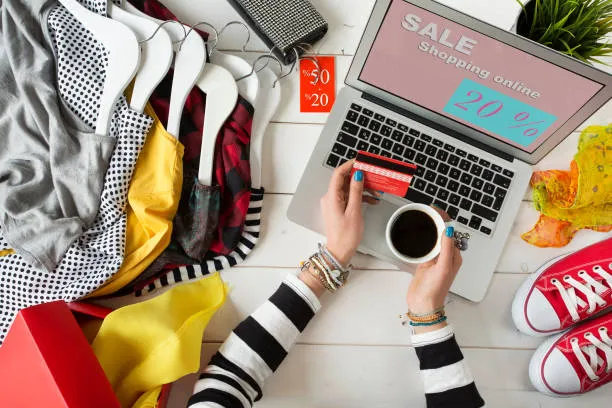Are you falling victim to the consumer culture… because of unhealed trauma?
The two may sound completely unrelated – but before we look at how they might be, take a moment to reflect on these questions:
- When was the last time you bought something you didn’t need after a stressful day?
- How often do you scroll through shopping apps when feeling anxious or empty?
- Do you ever feel a rush when purchasing, followed by guilt or regret?
- Have you noticed yourself buying things to feel more attractive, successful, or worthy?
- When you see ads, do they make you feel excited about possibilities – or inadequate about who you are?
If you said “Yes!” to even one of these, congratulations! You’re participating in what researchers now call the “trauma economy.”
And it’s a $5 trillion global marketplace that is actively profiting from our unhealed wounds, turning emotional pain into purchasing power.
So how do we break free?
Yes – Trauma Shapes Our Buying Behavior
We’re all well aware of the “consumer economy” we live in today. And for most of us, we’re totally fine with it – because we love our stuff!
But what we may not see under the shiny advertising is a more uncomfortable truth: much of modern purchasing behavior is driven not by need or even desire, but by unprocessed emotional pain.
But here’s a shocking stat: recent research has found that individuals with unhealed trauma engage in compulsive buying at rates 3x higher than the general population.
No, we aren’t talking about moral weakness or poor financial literacy. This is a neurobiological response to dysregulated emotions seeking any available relief.
How can this be? It goes back to unresolved trauma.
Childhood trauma fundamentally alters how the brain processes reward and stress. The prefrontal cortex, responsible for impulse control and long-term planning, becomes less active, while the amygdala – our brain’s “fear center” – becomes hypervigilant.
This neurological rewiring is why the temporary dopamine hit from purchasing feels like medicine for an overwhelmed nervous system.
Each transaction becomes a micro-dose of relief from chronic emotional discomfort.
Three Faces of Trauma-Driven Consumption
Trauma manifests in consumer behavior through three primary patterns: numbing, validation-seeking, and overachievement.
Numbing
Numbing purchases – whether it’s the tenth pair of shoes, that late-night meal, or another gadget gathering dust – serve to temporarily disconnect from emotional pain.
The act of buying creates a brief dissociative state where problems fade and control feels restored. Studies show that 68% of compulsive buyers report shopping specifically to escape negative emotions.
Validation-Seeking
Validation-seeking consumption emerges from trauma’s assault on self-worth.
When core wounds whisper “you’re not enough,” the marketplace responds with products promising transformation.
Designer bags become armor against feelings of inadequacy. Cosmetic procedures promise to fix what trauma convinced us was broken.
Each purchase is an attempt to buy our way into worthiness, yet the hole remains unfilled because it was never about the product – it was about the wound.
Overachievement
Overachievement consumption reflects trauma’s conditioning that safety comes through performance.
This can look like investing in endless certifications, productivity tools, and status symbols that signal success – all great things, but dangerous when they become an obsession.
The trauma survivor unconsciously believes that if they can just achieve enough, buy enough markers of success, they’ll finally feel secure.
Yet each achievement only raises the bar higher, creating an exhausting cycle where personal growth platforms become less about genuine development and more about proving worth through the accumulation of credentials.
Why Marketing Preys on Insecurities – The Science of Emotional Manipulation
Modern marketing doesn’t just understand trauma responses – it deliberately triggers them.
Marketing professionals use sophisticated psychological research to identify and exploit what they call “pain points” – better known as emotional vulnerabilities.
How do they find these pain points? We tell them through our behavior.
Algorithms track not just what you buy, but when you buy, correlating purchases with emotional states to predict and trigger future buying behavior. Here are just a few of the methods that marketers use every second to track and act on our insecurities:
- Scarcity marketing (“only 3 left in stock!”) activates trauma-based survival instincts, triggering the same fight-or-flight response as actual threats.
- Social proof (“10,000 people bought this today”) exploits trauma’s erosion of self-trust, making us rely on others’ choices rather than our own judgment.
- Personalized retargeting ensures that moments of vulnerability – late-night anxiety scrolling, post-breakup browsing – are met with precisely targeted emotional triggers.
Recent analysis reveals that emotional marketing generates 31% higher conversion rates than rational appeals.
This isn’t a coincidence. It’s the exploitation of how trauma primes us for emotional rather than logical decision-making.
When the nervous system is dysregulated, the rational brain goes offline, leaving us vulnerable to whatever promises immediate relief.
We Live In The Insecurity Industrial Complex
Entire industries have emerged that profit specifically from trauma-induced insecurities.
The weight loss industry ($72 billion annually) thrives on body shame rooted in childhood criticism or abuse.
The anti-aging market ($62 billion) monetizes fear of mortality and irrelevance, often stemming from early experiences of conditional love.
The self-help industry ($13 billion) can paradoxically reinforce the trauma narrative that we’re broken and need fixing, creating dependency rather than genuine healing.
These industries are actively creating and maintaining the very insecurities that drive us to their products and marketing.
- Beauty brands fund studies showing how their absence causes problems, then position their products as solutions.
- Fashion brands accelerate trend cycles to ensure last season’s purchase feels inadequate.
- Tech companies design products with planned obsolescence, ensuring that feeling “behind” becomes a constant state requiring constant consumption.
This is yet another example of how mental health education is necessary for us to expose these tactics and advocate for more consumer protection.
Fast Fashion & Beauty: Triggered by Dopamine & Validation Loops
If you want to see the trauma economy in action, look no further than the fast fashion industry.
Fast fashion represents the perfect trauma economy product:
- It’s cheap enough to enable frequent purchasing
- It’s tender enough to promise transformation
- It’s disposable enough to require constant replacement
Research shows that fast fashion retailers deliberately engineer “dopamine loops” – designing store layouts, apps, and marketing to maximize the neurochemical rewards of buying while minimizing the financial barriers that might engage rational thought.
Need a stat to shock you into just how powerful this industry is?
The average American now purchases 60% more clothing than in 2000, but keeps each item half as long.
It becomes a vicious cycle:
- The excitement of the purchase provides temporary relief from emotional discomfort.
- The arrival of the package offers a brief hit of anticipation fulfilled.
- But within days or weeks, the emptiness returns, often accompanied by shame about the purchase, creating a need for another hit.
Wash, rinse, repeat.
Social media amplifies these cycles exponentially. Instagram and TikTok have transformed fashion from seasonal to daily, with “outfit of the day” (OOTD) culture creating pressure for constant newness.
The fear of being seen in the same outfit twice (which is a completely manufactured anxiety) drives purchases that would have seemed absurd a generation ago.
Beauty as Identity Battleground
The beauty industry is much like the fast fashion industry – showing how trauma monetization can succeed by positioning itself at the intersection of identity and worth.
Cosmetics marketing doesn’t sell products. Cosmetics marketing sells solutions to inadequacy.
They promise that this shade of lipstick or that skincare routine will finally make you worthy of love and respect.
The industry deliberately creates what researchers call “beauty sick” – a state of perpetual dissatisfaction with appearance that drives continuous consumption.
The rise of cosmetic procedures among increasingly younger demographics reflects trauma economy acceleration. The beauty industry’s response to body positivity movements has been to co-opt the language while maintaining the underlying message: you need our products to be acceptable.
Influencer marketing intensifies these dynamics by presenting curated perfection as authentic reality.
The “no-makeup makeup look” requiring 20 products, the “natural beauty” achieved through expensive treatments – these contradictions create cognitive dissonance that trauma survivors, already struggling with reality testing, find particularly destabilizing.
A healthy lifestyle community that celebrates authentic appearance becomes revolutionary in this context.
The Trauma Behind Hustle Culture
If we are going to get to the heart of the issue, we have to go past simply buying happiness. You can also find this trauma-informed consumer culture in our obsession with productivity and hustle.
Hustle culture represents trauma’s manifestation in productivity and professional identity. The glorification of 80-hour work weeks, the “sleep when you’re dead” mentality, the constant pressure to monetize every hobby – these aren’t signs of ambition but symptoms of unhealed wounds that equate worth with output.
The trauma economy has masterfully monetized this wound through productivity products, courses, and coaching that promise to make you finally enough.
The $167 billion personal development industry often reinforces rather than heals trauma patterns, selling solutions that require constant upgrading, advanced certifications, and newer methodologies.
Each purchase promises to be the one that finally makes you worthy, yet worthiness remains perpetually out of reach.
This manifests in consumption patterns where people invest thousands in courses they never complete, productivity apps they abandon within weeks, and coaching programs that become dependencies rather than growth tools.
The underlying trauma – often developmental trauma where a child’s needs were consistently unmet – creates adults who believe they must earn their right to exist through constant achievement and acquisition.
The Great Consumer Awakening – What Happens When People Heal?
So, once we recognize the problem – what do we do to break free and start to heal?
Something remarkable happens when people begin healing their trauma: their consumption patterns radically shift. More than ever, people are starting to get intentional about what they do and don’t purchase – the impact those purchases have on their well-being.
“Healed consumers” report dramatic changes in their relationship with purchasing. The compulsive need to buy diminishes as emotional regulation improves.
Most notably, consumer brand loyalty is shifting from status symbols to companies aligned with personal values.
Social emotional learning plays a crucial role in this transformation. As people develop emotional literacy, they begin recognizing marketing manipulation in real-time. This awareness alone significantly reduces susceptibility to emotional marketing.
From Reaction to Intention
Intentional consumption emerges not from deprivation but from healing. When trauma no longer drives purchasing, buying becomes a conscious choice rather than a compulsive reaction.
How can you start to do this yourself? Before you make a purchase – even at the moment you feel that twinge of desire – ask yourself these questions:
- What emotions am I feeling right now?
- What need or want is this product promising to fulfill?
- How do my personal values align with this company and its products?
By taking a moment to pause and reflect, you can begin to make more intentional and informed purchasing decisions. This shift towards intentional consumption not only benefits individuals but also has a positive impact on society and the environment.
People report finding joy in using things fully, in choosing quality over quantity, in supporting businesses that reflect their values. The mental health platform of the future helps people recognize and heal purchasing triggers, transforming their relationship with consumption.
This shift threatens the fundamental structure of the trauma economy. When people heal, they buy less but choose better – in all parts of life!
The Ripple Effect of Collective Healing
As more individuals heal and shift their consumption patterns, don’t be shocked as market forces begin responding.
We’re already seeing brands that previously exploited insecurities pivoting toward authenticity and values-based marketing. For some, it may be too-little-too-late, but something is better than nothing at all.
We’re also seeing the emergence of trauma-informed marketing – approaches that consciously avoid triggering trauma responses.
Companies are discovering that transparent, ethical practices generate stronger customer loyalty than manipulation tactics. The rise of B-Corporations, benefit companies that balance profit with purpose, reflects this shift.
When consumers heal enough to choose from intention rather than pain, businesses must evolve or become obsolete. A platform for social impact that connects conscious consumers with ethical businesses accelerates this transformation.
It’s Our Time to Start Healing the Marketplace
The trauma economy isn’t inevitable. It’s a reflection of our collective wounds. But we can – and we must – heal.
And as we heal individually and collectively, we have the power to transform not just our personal consumption patterns but the entire marketplace.
By no means does this require us to become anti-consumer. We should rather seek to become conscious consumers whose purchases reflect values rather than wounds.
The path forward requires both individual healing work and systemic change:
- We need therapeutic approaches that address trauma’s impact on financial behavior.
- We need financial literacy education that includes emotional literacy.
- We need regulatory frameworks that protect vulnerable consumers from predatory emotional marketing.
Most importantly, we need to recognize that healing our relationship with consumption is part of healing trauma itself.
At AlignUs, we are building an online community built on the shared values of self-realization and awareness. Whether it’s in our physical diets or digital consumption, we can break free from the cycle of emotional spending and instead make intentional, mindful choices that align with our true selves.
Ready to break free from trauma-driven consumption? Join our community and take the first step!
We invite you to join AlignUs to access resources for healing your relationship with money, consumption, and self-worth.
Let’s discover – together – how true abundance comes not from what we buy but from recognizing we were always enough.




